In clearing out my late father’s stuff, I came across quite a few cameras. Dad was an instrument maker and specialized in optics. He used to buy up cameras out of ‘bargain bins’ and try to bring them back to life. One of the cameras I came across was a Minolta X-300.
I’ve owned quite a few SR mount Minoltas, mainly SRTs, but some later models as well. I had some XG-M and XG-9 cameras and I picked up an X-300 once before, but it wasn’t working. Dad’s X-300 is fully functional. The more I examined it the more impressed I was.
Later manual focus Minoltas
The X-series bodies were an extension of Minolta’s successful automatic SR-mount bodies. Previous to the release of the X-700 there were two distinct lines – the metal vertical shutter XD series which introduced multimode automatic exposure to the world and the more consumer oriented XG series with horizontal cloth focal plane shutters.
The XG series grew to become more and more capable, featuring full information viewfinders and most of the features you could ever expect on a top-end body.
The X-Factor
The X-700 grew out of that XG line. With it Minolta produced a camera to fulfil any photographers’ need. It had sophisticated metering and motor drives. As well as aperture priority automatic exposure, it also allowed for a programme mode where the camera would pick an appropriate combination of shutter speed and aperture for any given lighting condition.
The X-700 was a big hit in 1981. European Camera of the year several years running. It was followed up by the X-500 (aka X-570) two years later. This was a cut-down version. It lost the program mode and the X-700’s exposure compensation dial, but in many ways a more practical “photographer’s camera” due to the way its manual metering worked.
Then, under a year later there was the Minolta X-300 (X-370 in North America). I’d overlooked this model. I think I did it a disservice.
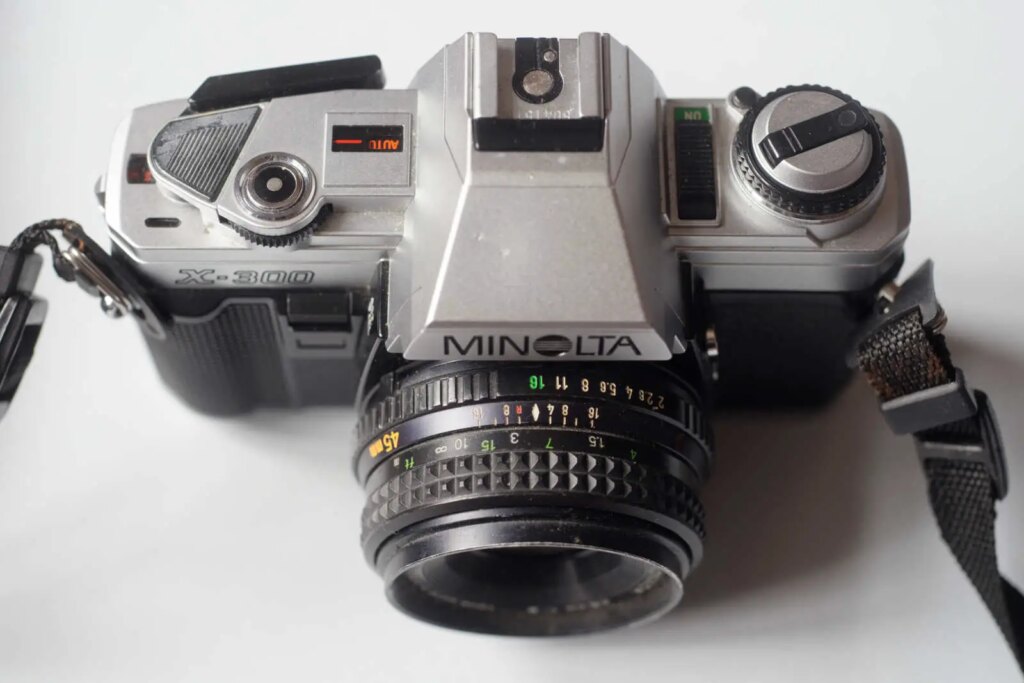
The Minolta X-300 loses some nice features from the X-500. The main ones (from my point of view at least) are:
- No depth of field preview
- No apertures in the viewfinder
- No sophisticated off-the-film flash metering
- No interchangeable focusing screens
However, from a practical point of view it works very well.
A voyage around my father’s camera
To start off on our tour: It is noticeable that someone has decided to have a go at re-designing the way that the right-hand top-plate of an SLR works. Such experiments are often dead-ends, but here it works quite well. It is not pretty, but looks aren’t everything.
Top
Rather than having a conventional shutter speed dial, the Minolta X-300 features a little control wheel under the shutter release. It is positioned on the front edge of the top-plate where it can be easily shifted with an index finger. Moving this wheel in either direction allows the selection of shutter speeds. These run from 1/1000 to 1 second plus B and an auto setting. These values are shown in a little window on the top plate, and you can circle through the options in either direction.
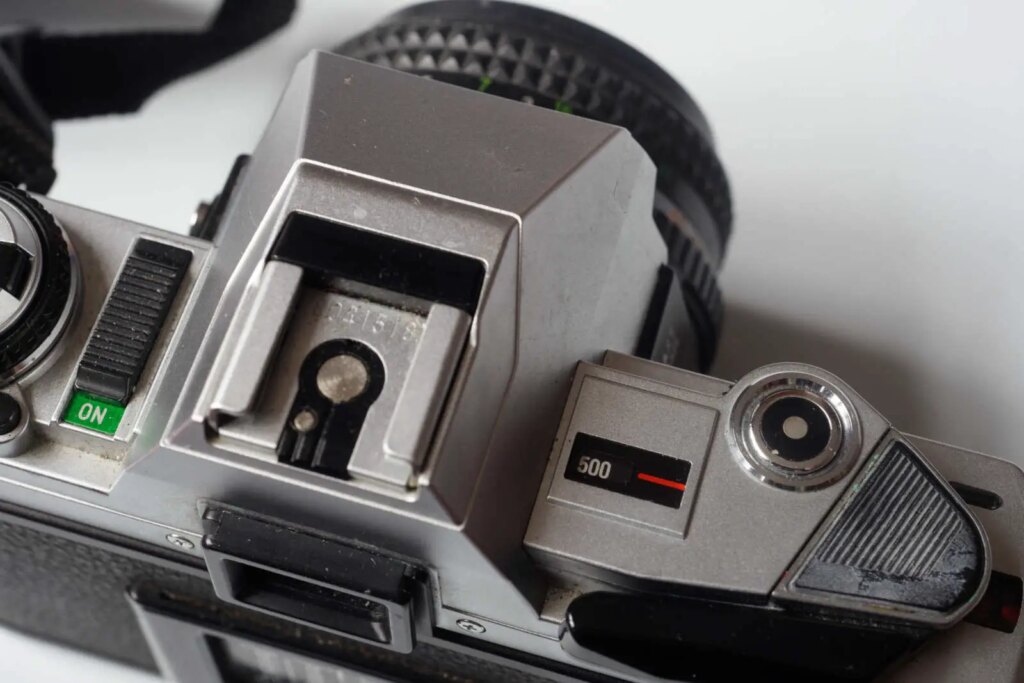
The shutter release is Minolta’s standard touch-sensitive one from the XD/XG vintage. The shutter speed control, window and shutter release are all incorporated into a hump on the top-plate which also covers the boss of the wind-on lever.
Next to the hump on the top plate are the film counter and an indicator that shows if a film is loaded and how far through the film you are (partially duplicating the film counter).
Over on the left of the top plate is the ISO dial set around the rewind crank and an on-off switch. The ISO dial has a lock button, so the dial won’t get knocked by accident.
Front
Although there is no compensation dial, the Minolta X-300 offers an exposure lock positioned on the front of the camera just below the shutter speed dial. You simply point the meter at the subject you want properly exposed, hold the lock-down with your middle finger, then recompose and shoot.
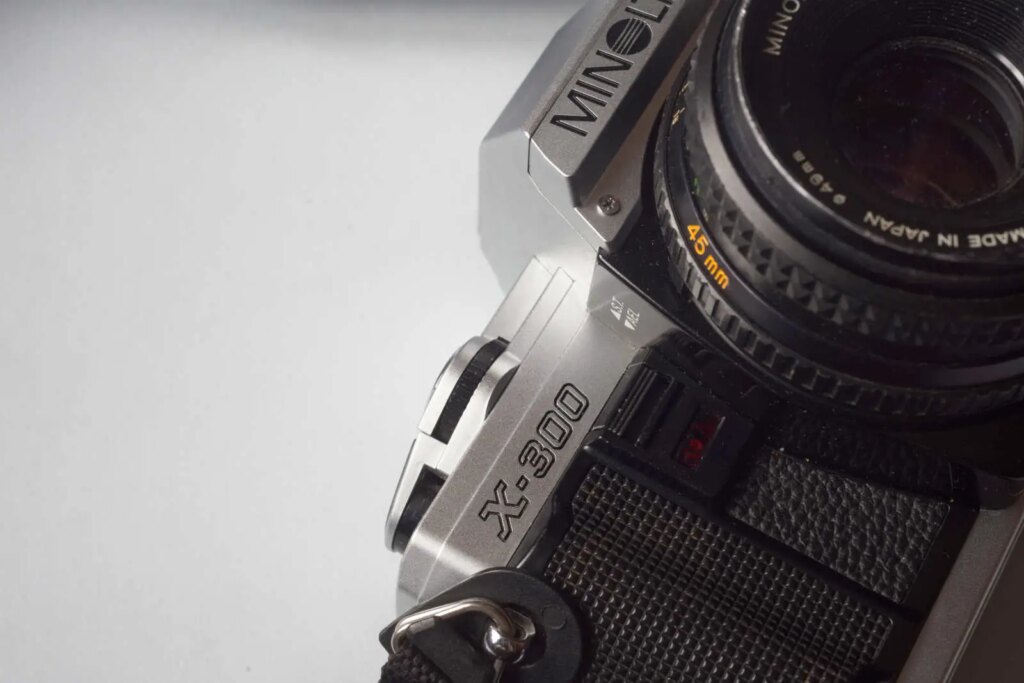
Lifting the same control up engages a self-timer, which helpfully flashes slowly at you for the first eight seconds after the shutter is pressed and then gets quite manic for the last two seconds as a warning of the impending selfie.
Next to the self-timer is a small (but welcome) finger grip for the fingers of the right hand.
On the other side of the mount is a lens release button and a threaded connector for a mechanical remote release.
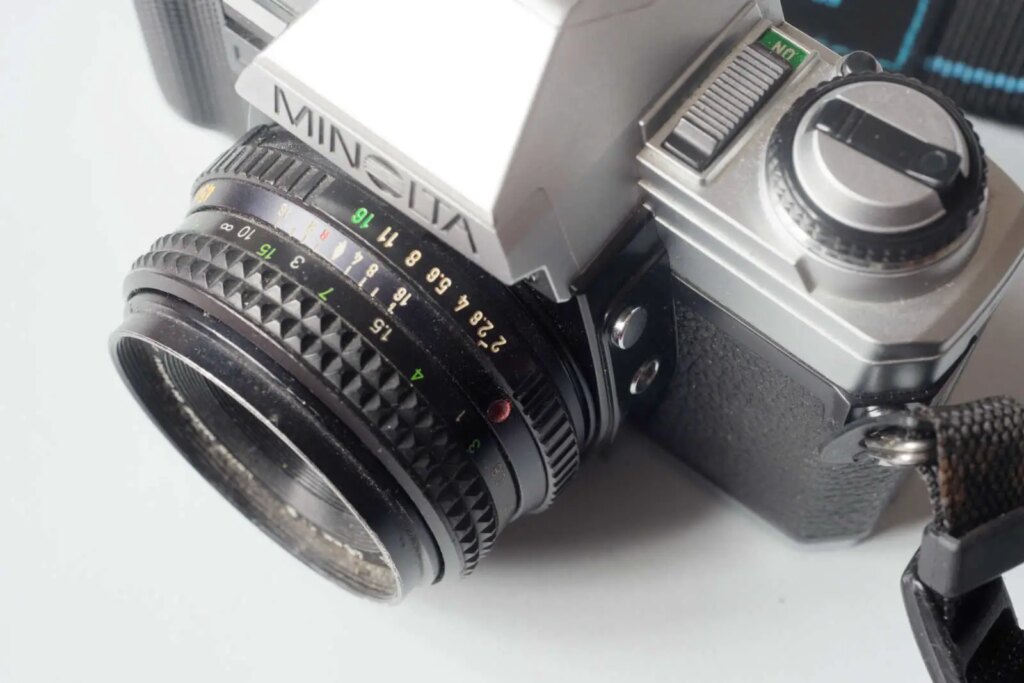
Bottom
On the base is the battery compartment, which takes readily available 1.5v silver-oxide batteries. Also present are a rewind button and connections for an autowinder.
In use
The Minolta X-300’s control wheel for the shutter speeds moves very easily. There is no lock to prevent you taking the camera off auto exposure, but the camera shows a clear A or M in the viewfinder. Also, when you are off the automatic settings the set speed is shown by a flashing LED in the viewfinder, while the judged ‘correct’ speed is shown by a constant LED. Simply match the two up and you have correct exposure. It is quite reminiscent of the paddle-and-needle system of the SRT cameras, but is actually giving you more useful information.
Battery management is quite good too. There is a switch on the top plate which effectively disables the camera, but if you leave the camera on, the meter stops drawing power about 15 seconds after your finger leaves the sensor on top of the shutter release. If you are wearing gloves, the meter will also switch on at a half press.
The viewfinder is nice and clear. The focusing aids work very well.
The biggest plus for the Minolta X-300 is the mount. Minolta produced countless lenses for the SR mount over the space of 30 years. The system was extensive and the quality of the lenses was very high. Prices head forever upwards, but the sheer number of SR mount lenses produced tends to make them competitive.
Issues?
Some X-series cameras suffer from problems due to cheap capacitors that were introduced later in production. There are guides available to take you through replacing these components, but you need a decent soldering technique and good tools. The downside for the Minolta X-300 is that the cheaper capacitors were used from when the cameras were first introduced and the capacitor that needs swapping out is supposed to be difficult to replace without frying the board it is attached to.
Pictures


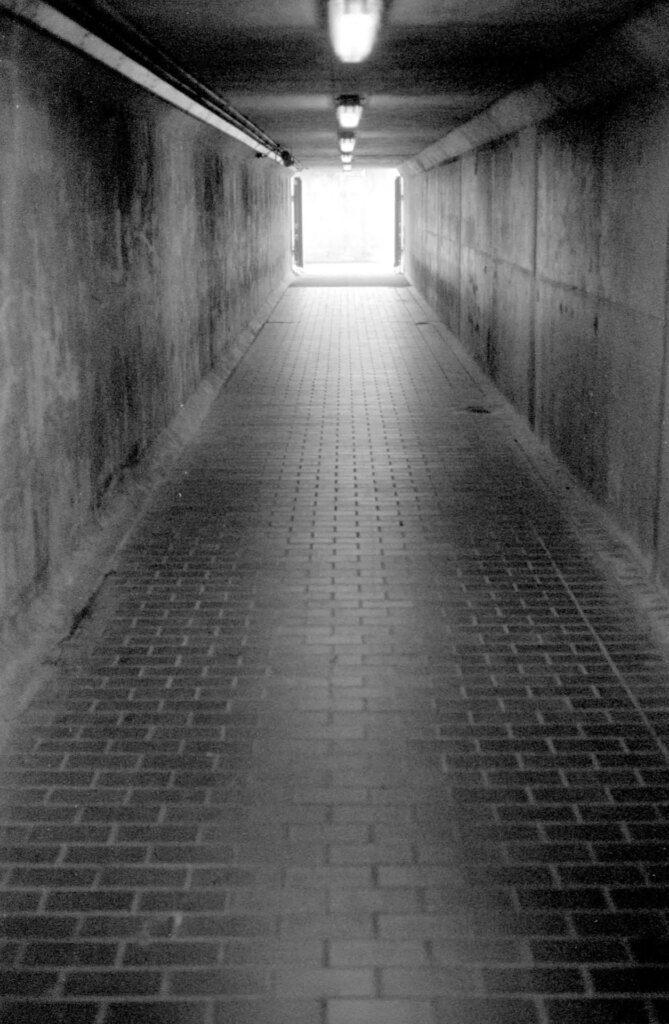



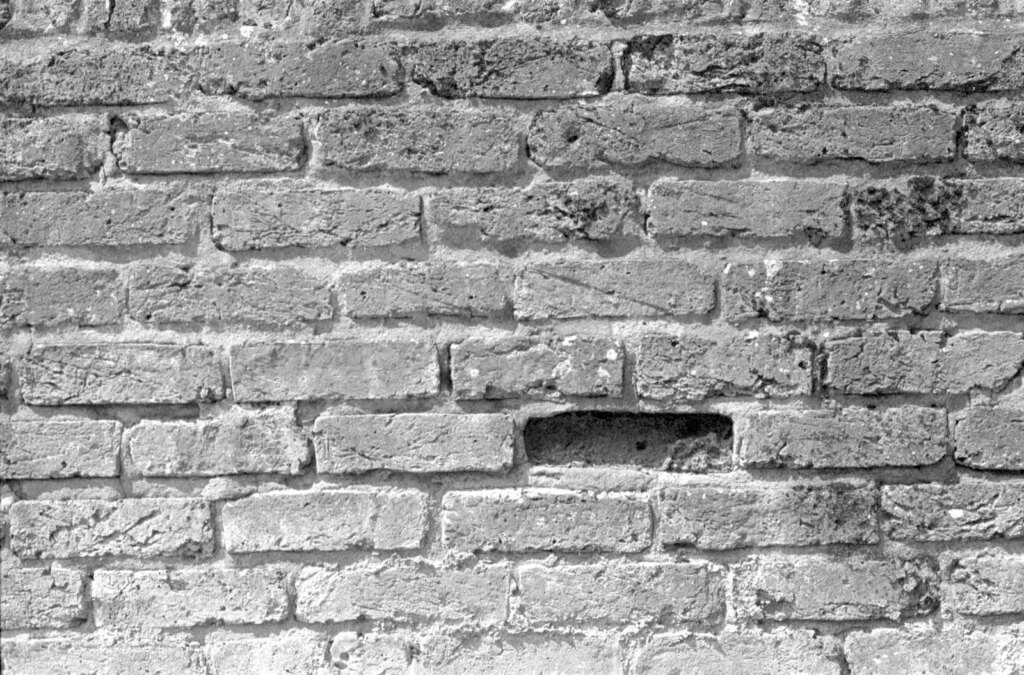




The end?
The Minolta X-300 may have a claim to be one of the most successful analogue SLR cameras ever. Minolta made it for a long time. Production moved around East Asia, ending up in Seagull’s plant in China.
Once Minolta discontinued the X-300 in 2004, Seagull carried on making a version under licence as the DF-300. The also re-badged it for a host of other companies. Camera-wiki.org lists over a dozen rebrandings from Argus to Zenit, taking in familiar names like Soligor, Vivitar and Revue on the way.
Seagull may still be making them to this day. Although they don’t seem to be officially imported to the west. The Aliexpress website shows a variety of cameras, through from the DF-300, DF-300E (as the 300 but appears to have a Depth of Field preview), DF-300H (as the 300E, but looks like it has been on steroids with a big grip). In addition to there are DF-98, DF-99, DF-1000 variants which are manual metering only.
Each of these Seagull variants shares the same distinctive ‘hump’ incorporating winder, shutter speed control and the same power switch and self-timer as the original Minolta X-300, thereby showing their lineage.
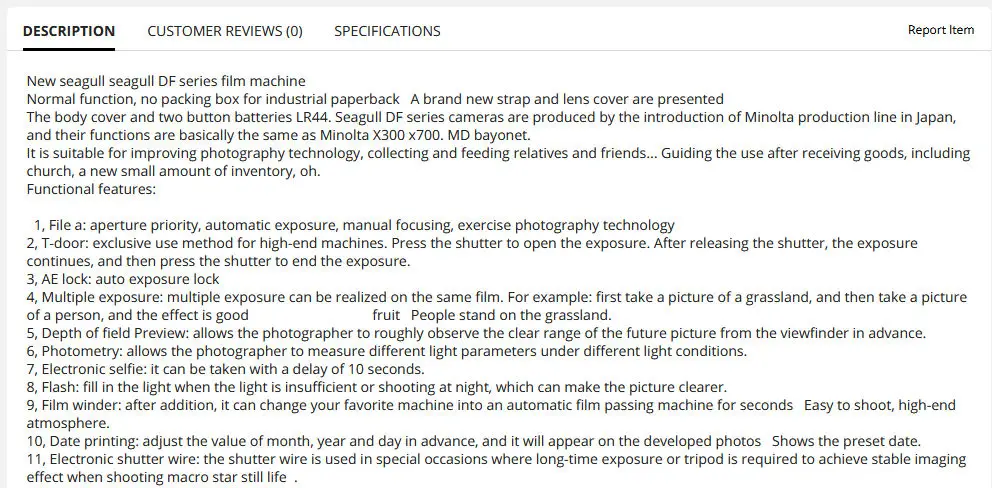
All in all, the Minolta X-300 a bit of a hidden gem. The lack of a lock between auto and shutter speed settings will possibly polarize the views of some towards or against this camera, but the exposure lock is a real plus for me.
There was lots of fuss a little while ago about Ricoh developing a new analogue film camera, but Seagull could do worse than to distribute a copy of their DF-300E in the west.
Share this post:
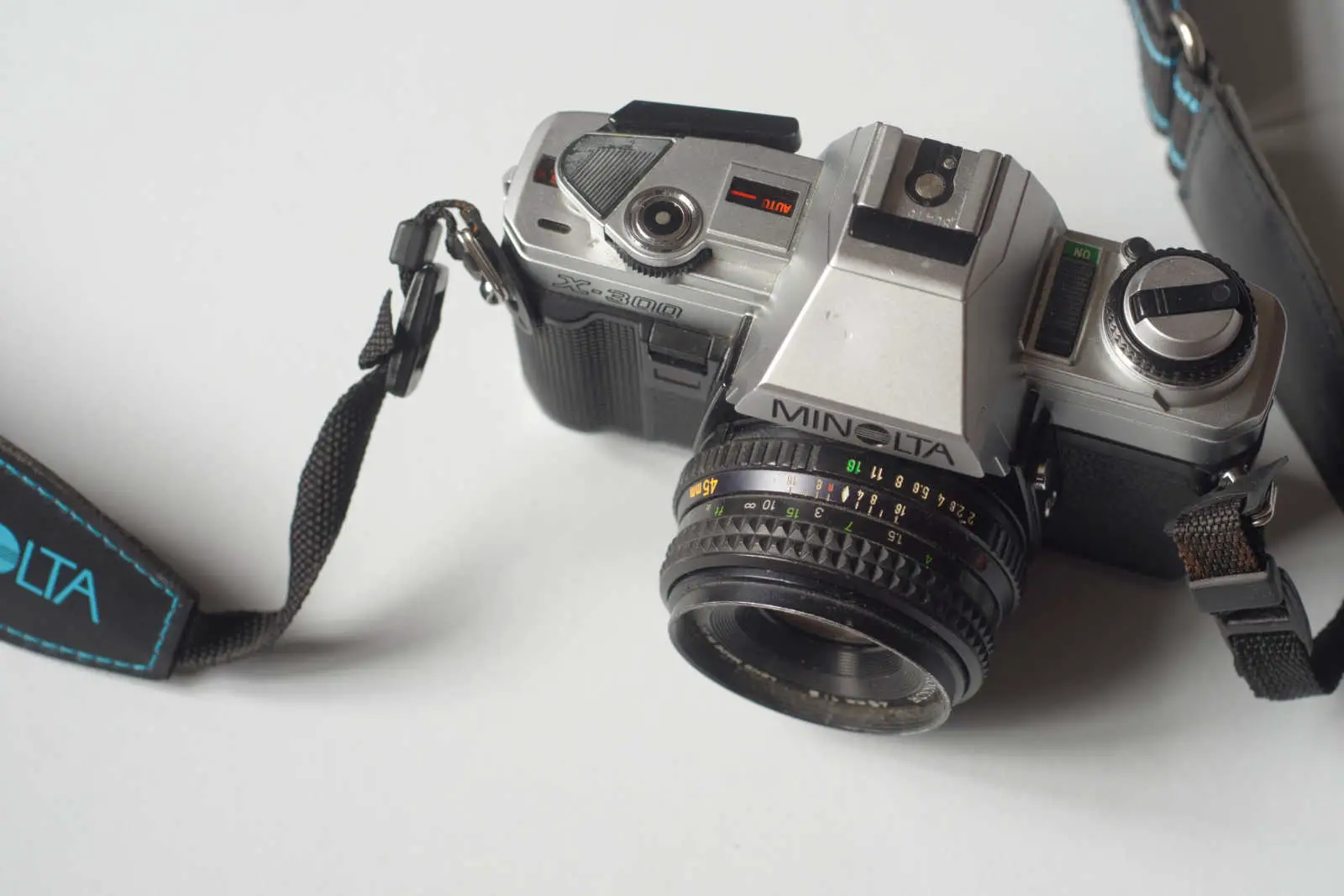








Comments
Richard Wilford on Minolta X-300 Review – The Last Manual Focus SLR
Comment posted: 24/07/2023
Martin on Minolta X-300 Review – The Last Manual Focus SLR
Comment posted: 24/07/2023
I love the metered manual mode, the lack of which was often complained with Minolta cameras. I also found that aperture prioritity always worked well enough for me.
Thanks for the your insight into this lovely little shooter!
Best regards,
Martin in Austria
Ilya on Minolta X-300 Review – The Last Manual Focus SLR
Comment posted: 24/07/2023
CLIFF BOWN on Minolta X-300 Review – The Last Manual Focus SLR
Comment posted: 12/01/2024
Ian Graham on Minolta X-300 Review – The Last Manual Focus SLR
Comment posted: 05/10/2024
Comment posted: 05/10/2024